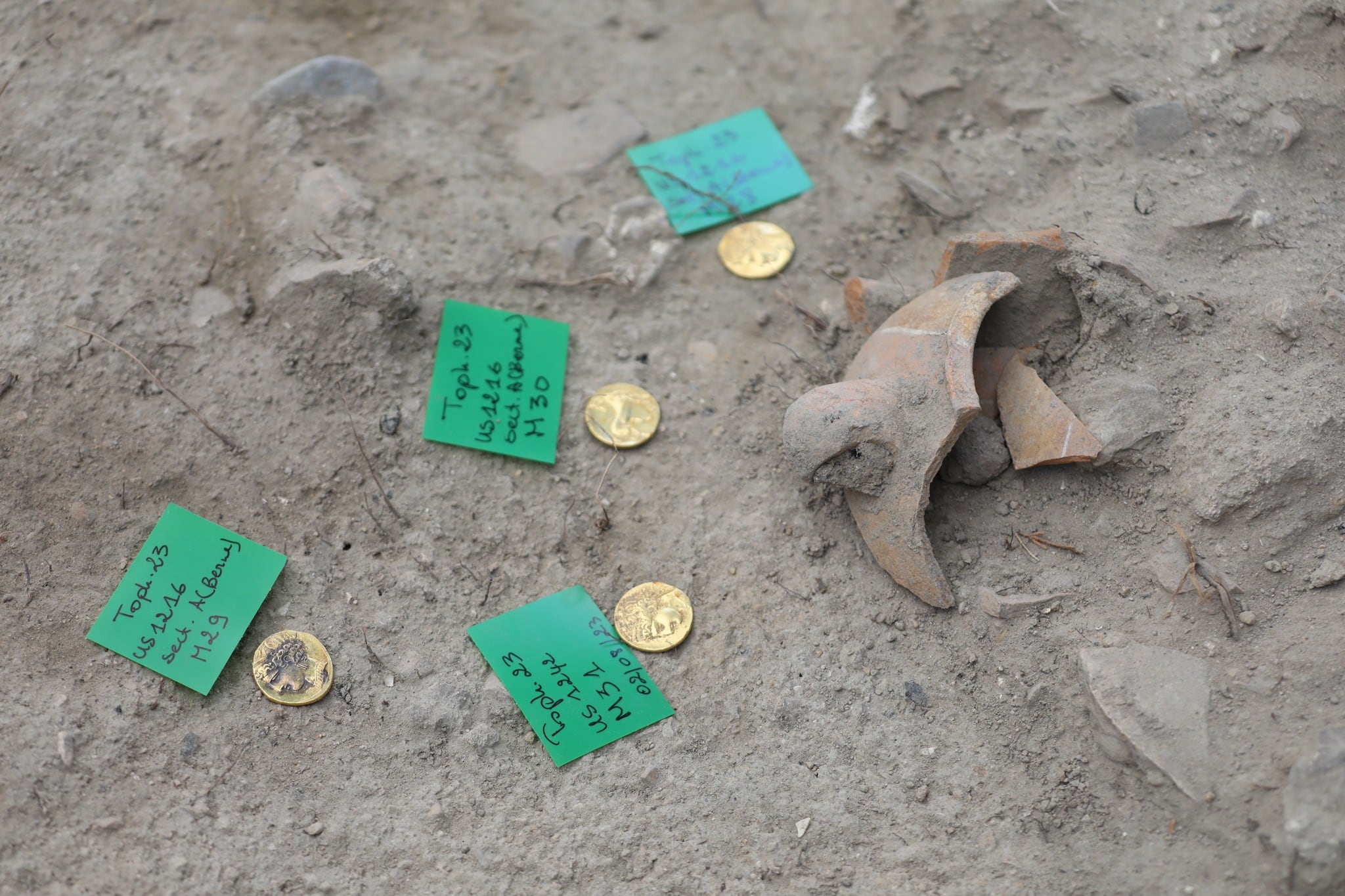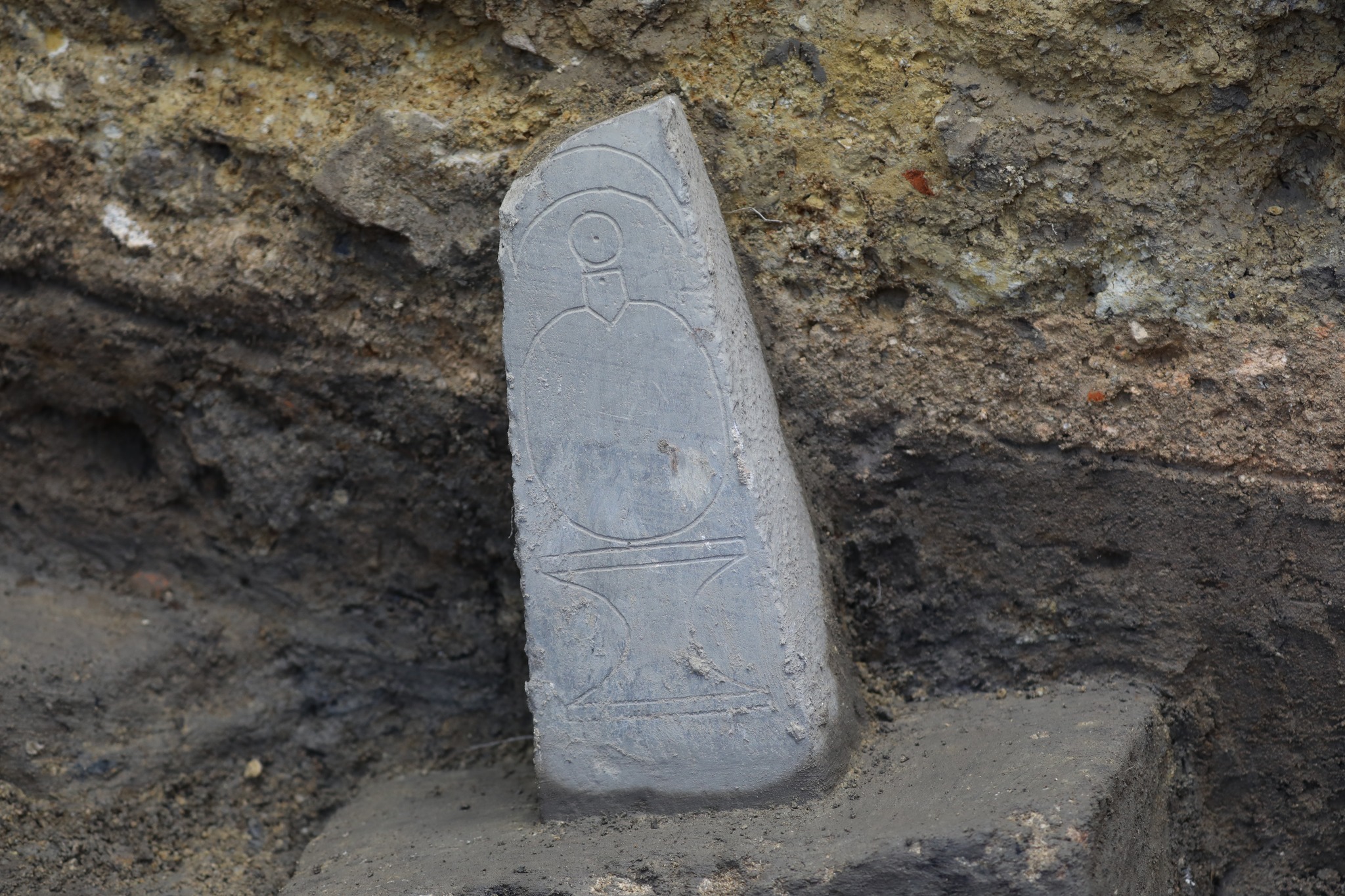Měl jsi pravdu ten kůň na té minci je opravdu zajímavý skoro jako by to bylo z nové doby dokonalé
The child sacrifice site hid thousands of burial urns and very rare gold coins
Categories: Nálezy nejenom s detektorem na blízkém východě
Archaeological excavations of a cemetery and temple at the site of a sacrificial site in Carthage, Tunisia, have unearthed 2,300-year-old gold sacrificial coins and burial urns containing the remains of infants and animals, some even together in one vessel.
The coins, 24 mm in diameter, depict the ancient goddess of fertility and motherhood, Tanit, who together with her husband Baal Hammon were the main gods of Carthage. Gold coins depicting her are very rare in the archaeological record, and were unusual even in their own time. A set of five rare gold coins was probably left at the temple as an offering by wealthy worshippers.
The city-state of Carthage was a Phoenician colony in what is now Tunisia. It functioned from 800 BC until 146 BC, when it was destroyed by the Romans. For several centuries, it functioned as a bustling trading centre and seaport with "legendary" wealth. Like other Phoenician cities, Carthage had a tophet, a sacred place where sacrifices were made and buried; especially small children. The tophet in Carthage had its own "shrine" for sacrificial offerings and a cemetery.
The Carthage tophet was first explored by archaeologists in 1921, where they found 20,000 urns dating from between 400 and 200 BC. Occasionally, the remains of mostly infants and children under the age of four were buried along with the remains of lambs (and very occasionally other animals such as cows, pigs or birds). The surrounding soil is densely mixed with olive wood charcoal, probably the remains of sacrificial borders.
Experts have long disagreed as to whether such a vast number of infant remains were evidence of Carthaginian child sacrifices, or whether they were exclusively "child" burials. No Carthaginian written sources have survived on the subject, but Greek and Roman sources claim that the practice of child sacrifice existed in Carthage. However, the Greco-Roman sources are not considered entirely reliable because long wars were fought with Carthage and misinformation may have been deliberately spread for propaganda purposes.
The inscriptions on the stone tombstones are ambiguous, but it seems that the lambs were "substitutes", i.e. sacrifices to the gods instead of the children themselves. Recent archaeological investigations have led scholars to conclude that the remains in the urns were indeed sacrifices - whether animal or human: "Although once disputed, experts have found overwhelming evidence that Carthaginian parents ritually sacrificed young children as offerings to the gods," Oxford University said in a press release.
"It may have been out of deep piety or a sense that the good that the sacrifice might bring to the family or community as a whole outweighed the life of the child," said Josephine Quinn, co-author of the Oxford University study. "We need to be mindful of the high infant mortality rate - it may have been sensible for parents not to get too attached to a child who may not live to see their first birthday. We shouldn't imagine that ancient people thought like us and were horrified by the same things," she concluded.
Roman Nemec
Sources: ox.ac.uk, shemsfm.net, thehistoryblog.com, miamiherald.com

Buried urns most often with the remains of infants and young children

gravestones

Tanis coins

symbols and markers on tombstones

votive altar
The article is included in categories:



